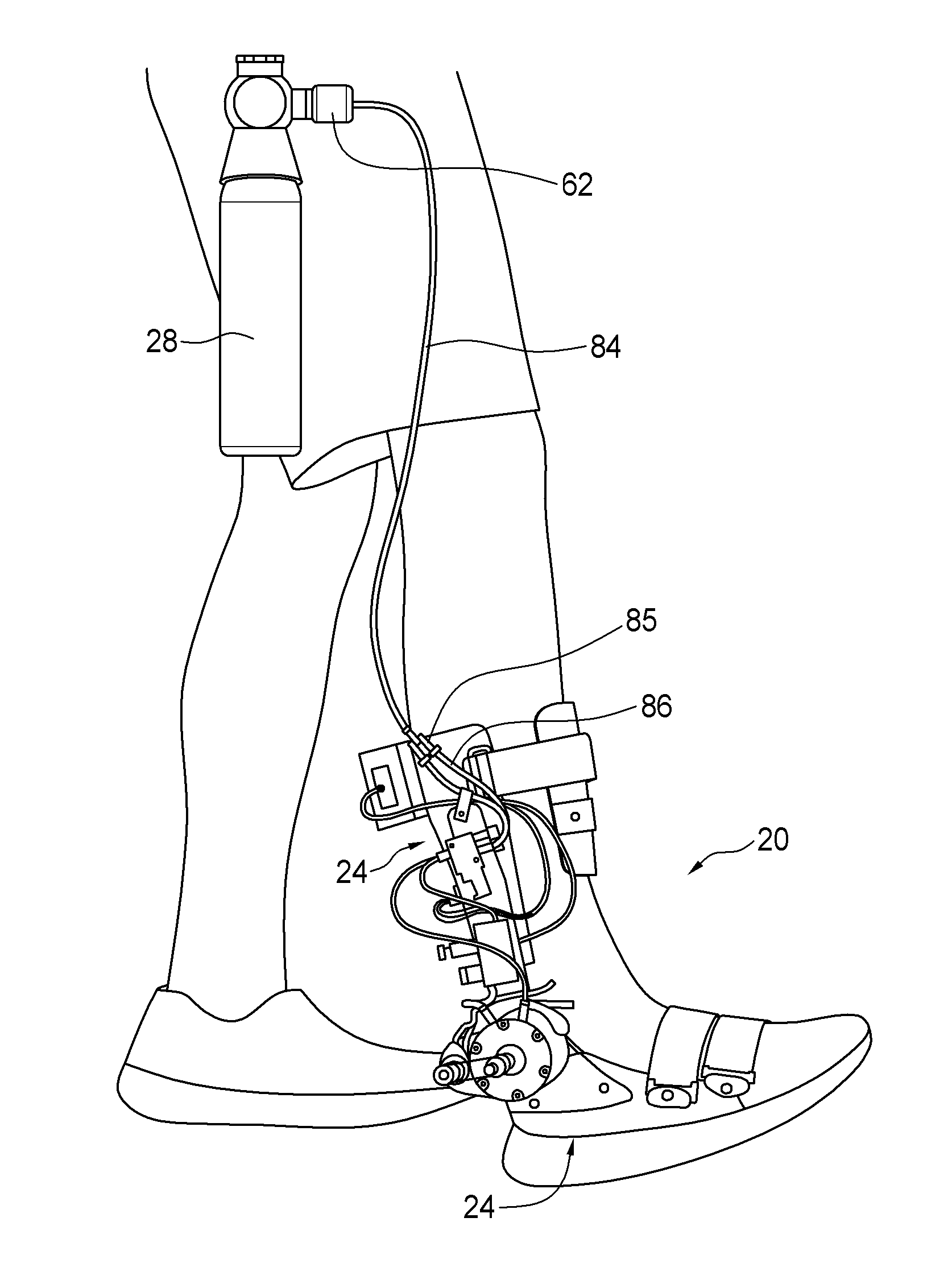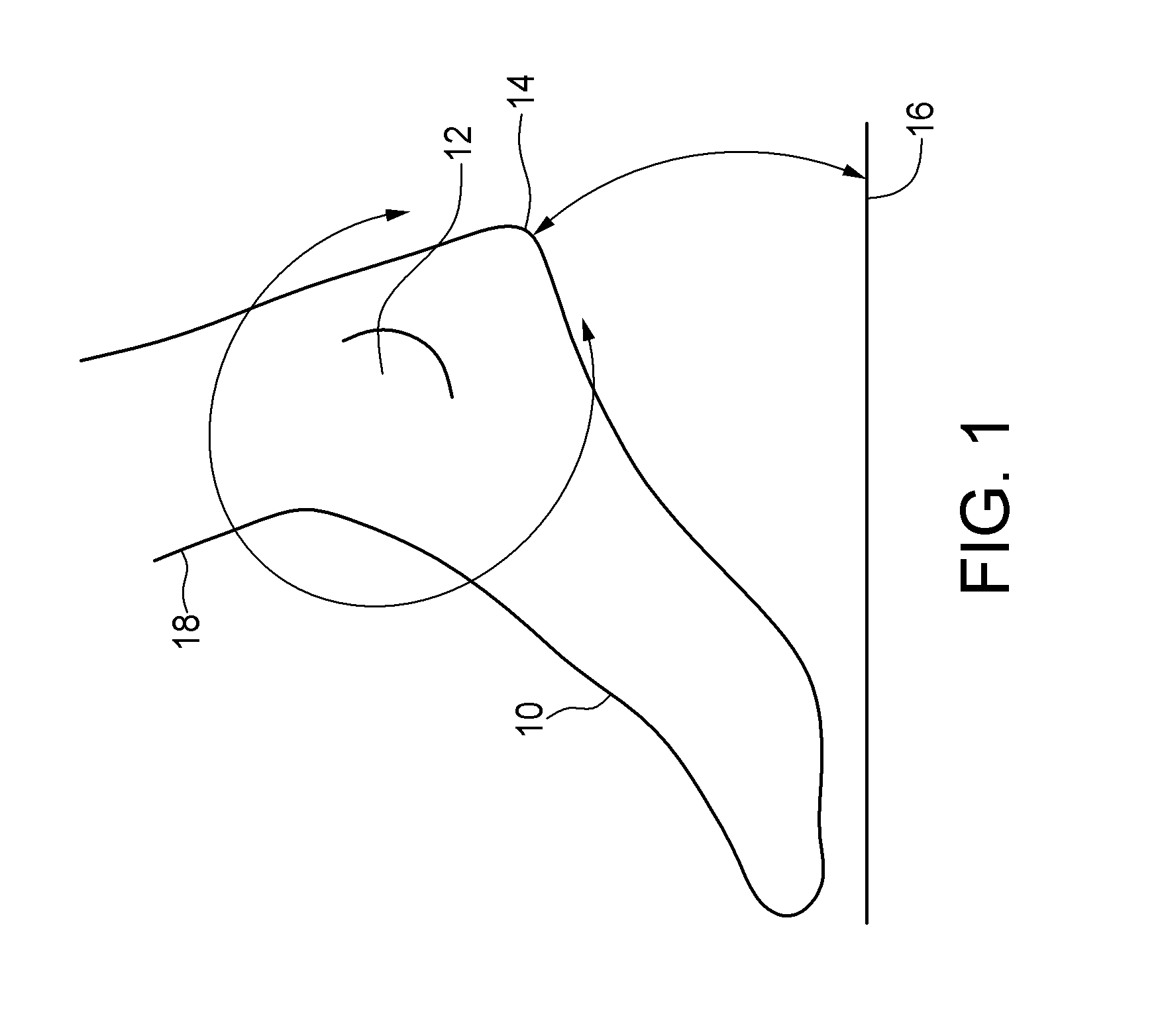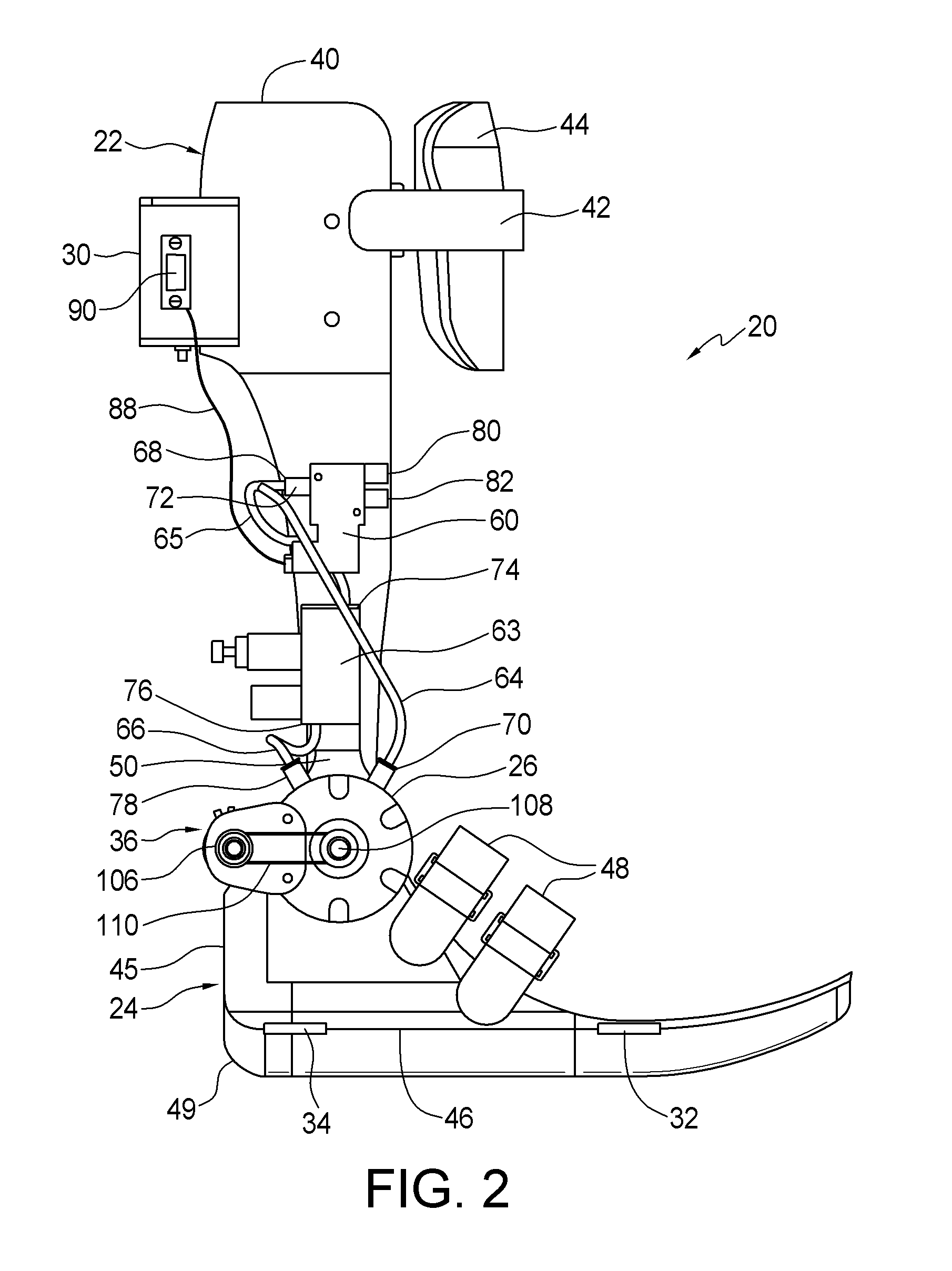Portable active fluid powered ankle-foot orthosis
a technology of active fluid and ankle-foot orthosis, applied in the field of orthosis, can solve problems such as affecting the quality of life, weakened or impaired muscles, and clearance problems
- Summary
- Abstract
- Description
- Claims
- Application Information
AI Technical Summary
Benefits of technology
Problems solved by technology
Method used
Image
Examples
Embodiment Construction
[0028]Embodiments of the invention provide a portable active pneumatically powered ankle foot orthosis. Example devices of the invention are pneumatically powered by a self-contained and portable (e.g., wearable) fluid power source, such as a container (e.g., bottle, cylinder, cartridge, etc.) of CO2 or other suitable fluid. CO2 containers that may be used include, as nonlimiting examples, containers used in the power tool industry. The CO2 or other fluid container can be worn on a belt or another area of the body. The fluid power source is coupled to a rotary actuator at or proximate to the ankle joint that is controlled by an on-board controller, e.g., a microcontroller having a microprocessor and memory. The torque generated by the actuator can be used for both motion control of the foot and to provide supplemental torque for the individual during gait.
[0029]A compact and lightweight structure attaches to the lower leg of a user, for instance around the leg, to provide a lower le...
PUM
 Login to View More
Login to View More Abstract
Description
Claims
Application Information
 Login to View More
Login to View More - R&D
- Intellectual Property
- Life Sciences
- Materials
- Tech Scout
- Unparalleled Data Quality
- Higher Quality Content
- 60% Fewer Hallucinations
Browse by: Latest US Patents, China's latest patents, Technical Efficacy Thesaurus, Application Domain, Technology Topic, Popular Technical Reports.
© 2025 PatSnap. All rights reserved.Legal|Privacy policy|Modern Slavery Act Transparency Statement|Sitemap|About US| Contact US: help@patsnap.com



